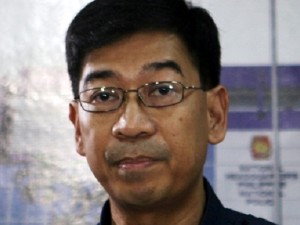MANILA, Philippines — The Philippine National Police is upgrading its crime solution methods by making full use of two computerized systems that store information on recovered firearms and ammunition and generate computer-drawn images of crime suspects, officials said Friday.
In a statement, Chief Superintendent Agrimero Cruz Jr., PNP spokesman, said the PNP was maximizing the use of its Integrated Ballistics Identification System (IBIS) to enhance the effectiveness of police officers in solving crimes involving the use of guns.
He said PNP Director General Nicanor Bartolome had ordered all regional directors to comply strictly with a PNP policy requiring the physical examination of all firearms, fired cartridge cases, and bullets recovered from a crime scene.
“The purpose of this requirement is to populate the database of IBIS by encoding each and every piece of evidence found in the scene of a shooting incident,” Bartolome said.
IBIS is capable of capturing, storing, comparing and retrieving large quantities of information about firearms in a database that is accessible to all investigative units of the PNP, the head of the PNP Directorate for Investigation and Detective Management, Supt. Samuel Diciano, said.
Diciano noted how nine recent shooting incidents in eastern Metro Manila were solved with the help of IBIS.
“The Integrated Ballistics Identification System is another tool to modernize the police service. Its efficiency will help the organization to immediately solve firearms related cases,” said Bartolome.
In a related development, Cruz said the PNP now used the Computerized Composite Illustration System (CCIS) to speed up the identification of felons.
Bartolome directed all police units to make full use of the facial composite illustrations generated by the computerized system.
“CCIS is a technology introduced by Australian Federal Police that provides precise facial profiling of a suspect. This system produces more realistic photo than the old system of hand-drawn or cartographic sketch as it stores over 700 facial images,” Cruz said.
The images can be combined into countless real-life photos, he said.
More than 100 PNP officers have been trained to operate the equipment, which the PNP acquired to standardize the drawing of the faces of crime suspects based on descriptions of eyewitnesses.
“The facial composite illustrations do not only contain basic descriptions of the suspects but also ample information necessary in cross referencing with other suspects engaged in crimes of a different nature and modus operandi,” Cruz said.
The system includes information about certain suspects, such as their criminal case number, the offense or incident, their names or aliases, sex, age, height, weight, build, complexion, description, names of the describing parties, the requesting parties, investigators on case and the interviewers.
“The necessary data is useful for critical evaluation which could lead to possible identification of the suspects specifically on cases handled by Task Force USIG or in terrorism related incidents,” Cruz said.
